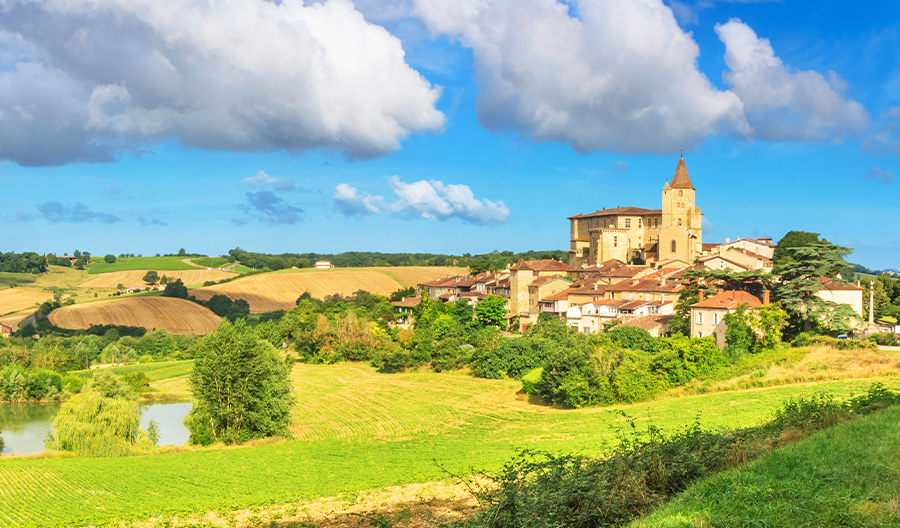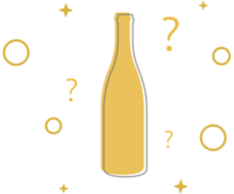When I page through the Moleskine that went with me to Gascony in 2017, my Armagnac tasting notes sound more like the dizzyingly aromatic contents of an “Alice in Wonderland” larder than the qualities of France’s most undersung brandy-making region: hazelnut, licorice, apple, miso, seaweed,leather, cardamom, fermented mushroom, brioche, chamomile, marmalade, mint, suede, tomato paste.
For many years, I’d heard Armagnac described as a rougher, more rustic version of its famous brandy cousin, Cognac, found 170 miles to the northwest. I heard it so many times, I began to repeat it myself, accepting as truth this old chestnut.
But what I learned, visiting more than a dozen producers among the Bas, Tenareze and Haut regions of Armagnac, was that France’s first brandy isn’t rough and tumble at all. It’s diverse, particular and personal, the stamp of each grape used and each producer’s choices indelible in its character, rangingfrom floral and savory to rich and ripe. If Cognac is a luxurious silk duvet, Armagnac is a finely stitched heirloom quilt. And every time you look at its ancient patterns, you’ll see some new piece you never noticed and can’t help but appreciate.
This isn’t a story about why Armagnac is better than Cognac. They are both lovely brandies, each well worth your attention. This is about why Armagnac—from its affordability to the vast playground of aromatic and flavor intricacy—is a true craft bartender’s spirit.Like any grape-based spirit, Armagnac begins as a wine. But while Cognac’s base wine is fermented to be a neutral means to an end (most Cognac producers do not tend their own vineyards), Armagnac producers, with little exception, are grower-producers, often with vineyards steps from where the distilling takes place. And many, like Tariquet, produce table wine as well as Armagnac (Cognac producers do not, as a rule).
Of the 10 grape varieties allowed for use in Armagnac, four dominate: Ugni Blanc, Baco Blanc, Folle Blanche and Colombard. An ancient fifth, plant de grasse, is making a comeback as a few producers experiment with it.“The most commonly planted is Ugni, at around 55%. The second is Baco at 35%, then Folle and Colombard,” says May Matta-Aliah, Armagnac’s regional American ambassador and educator for the last decade. But how distillers use those grapes is unique. “It really tends to be more of a producer decision,” she says. “And I would say that it changes a little by the region,” depending on the soil and how the grape adapts to it.
While Cognac is twice-distilled to make the final spirit as neutral as possible, Armagnac goes through its often-fire-fueled squat column stills once, leaving the spirit at a lower proof and with many of its aromatic-holding congeners intact. What this means is that Armagnac smells and tastes, well, awesome.

The general public tends to gravitate toward the word smooth. But if we’re looking at smooth as delicate, mellow and soft, then Cognac [fills] that bill. It’s a blank sheet of paper for oak to come in. Things that are more intense are harder to wrap our heads around, and Armagnac has more intensity.
This is perhaps the most alluring attribute of Armagnac. Unlike Cognac, Armagnac is a region dominated by dozens and dozens of small to medium-size multigeneration family producers who not only have relatively small production but who begin making choices about the expressiveness of their spirit right in their own vineyards, tended for decades.
Armagnac can be equated with mezcal, which can be made with up to 40 or 50 types of agave, whereas tequila uses just one. To have a spirit that has this kind of diversity is a huge opportunity. You’re limited in Cognac because it not only uses mostly Ugni Blanc but distills it to be neutral to focus on barrel-aging rather than the grape.
The pocket ease of V.S. and even VSOP Armagnac is indeed alluring, as well as that of the blanche versions, an unaged pisco-like spirit whose fascinating aromatics zero in on the individuality of the grape or grapes being used. But even the more rarefied versions are actually bottles in the realm of a possible splurge, and they’re by and large vintage (a rare bird for 3tnac, which favors the more scotch-centric base-age blends). A Cognac with several decades of blended age could run you from a couple hundred to thousands of dollars. I walked away from Armagnac with a 1966 Armagnac for around a hundred bucks and change.In workability, Armagnac plays well with others, too. As you might expect, the blanche versions are very perfumy; they’re fruit- and floral-forward. In general, they go really well in stirred Martini-styledrinks. And it’s a great substitute for pisco, another unaged grape-based spirit.
Aged versions also tend to cleave to spirits like rye and rum. As a spirit pairing, it plays nicely with rye whiskey and rum, usually something mid-age range. Think of it like a boxing match: Pair heavyweight with heavyweight, and lightweight with lightweight. If you pair an Armagnac that’s a few years old with a rum or rye that’s a few years old, they tend to meld to each other well.

